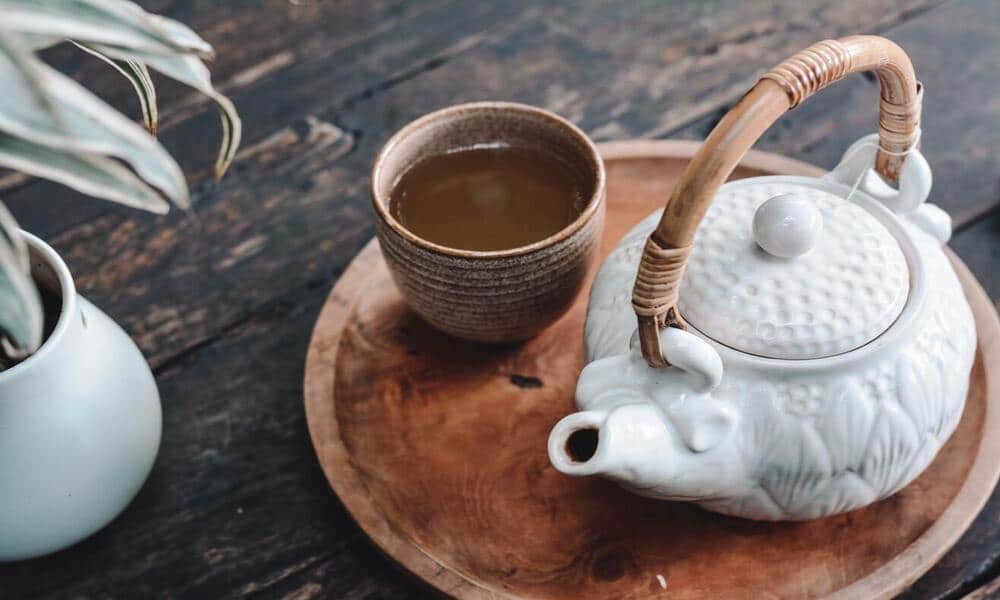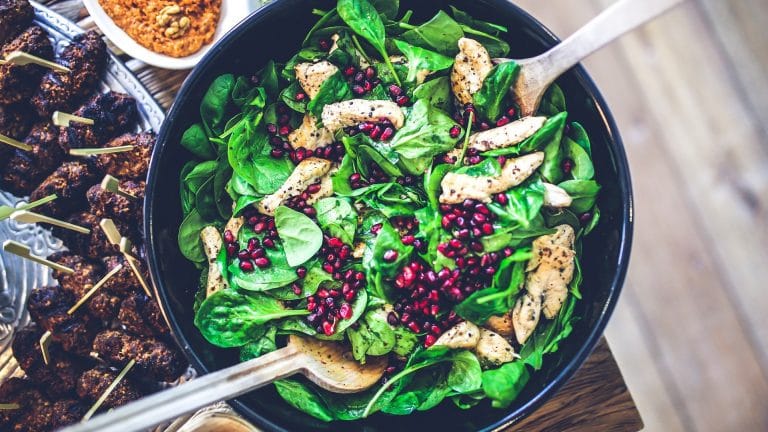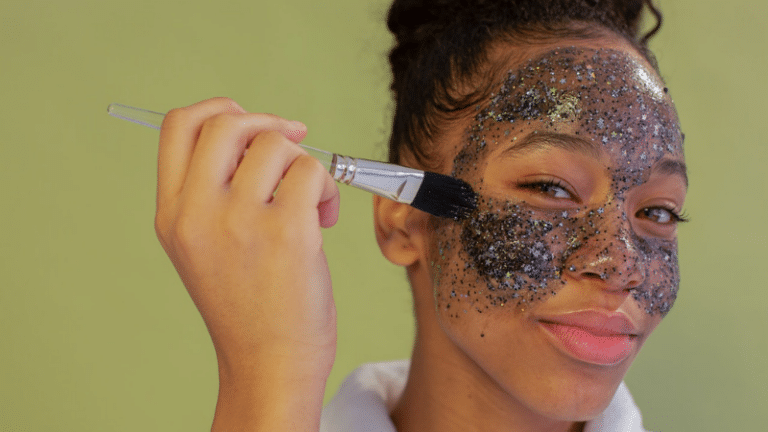33 Remarkable Tea Statistics and Facts for a Cozy 2024

People from all over the world appreciate a good cup of tea. Made with different herbs, the beverage comes in many flavors. It also has therapeutic qualities, which are frequently pointed to in countless tea statistics.
Our MedAlertHelp team is filled to the brim with the tea fanciers. Now, take your favorite mug and pour yourself some tea—we are embarking on a one-of-a-kind adventure. Read on to follow tea’s fascinating story through these statistics—from the tea’s inception in Imperial China up to its present.
Top 10 Tea Statistics for 2024
- Tea is the second most favorite drink in the world.
- The beverage was first introduced around 2700 BC.
- Women drink more tea (53.2%) than men (46.8%).
- People aged 30–39 are the biggest tea consumers.
- The annual tea consumption for 2020 was 289 billion liters.
- Statistics on the tea consumption by country for 2020 confirm that Turkish people consume tea the most—6.96 lb per capita.
- China produces 43% of tea.
- By 2025, the herbal tea market will probably reach $4,226.9 million.
- 79.5% of people drink tea at home.
- Drinking black tea each day lowers your chances of having a heart attack by 44%.
The History of Tea
The origin of tea is captivating, and its impressive story makes the beverage even more appealing. Tea originated in China, where it still has a massive following. That said, the drink has spread among multiple cultures. As of now, it has become a global beverage as many people have turned to healthier lifestyles.
1. Tea was first introduced around 2700 BC.
(The Teahouse) (Harvard School of Public Health)
The history of tea takes us back to 2700 BC. Legend says the tea origins are traced back to when a wild tree’s leaves fell into Shen Nung’s (Chinese Emperor) pot of boiling water. The tree was a Camellia sinensis. The emperor enjoyed the delightfulness it brought to his drink.
Interestingly, at first, tea was called a medicinal beverage. From that point on, tea has gained more and more fanciers. In other words, its popularity hasn’t declined, as tea facts assure.
2. In the 18th century, tea was considered dangerous.
(Mental Floss) (Healthline)
At the beginning of the 18th century, a French doctor published a treatise, asking for moderation in tea drinking, and claiming it causes sickness and eventually—death. That said, he was most certainly not the only one propagating the idea, according to the tea statistics.
For instance, one of Methodism’s founders, John Wesley, was also in favor of tea abstinence. Why were they so adamant about it, one might ask. Generally, moderate tea intake is healthier since drinking too much can have some downsides, like anxiety, digestive issues, insomnia, and headaches.
3. British people have been drinking tea for over 350 years.
(UTIA) (Harvard School of Public Health)
Tea facts remark that at the beginning of the 19th century, Britain introduced the concept of afternoon tea, when people take a break from their routines. Interestingly, tea is typically served with sandwiches and baked goods, like scones. Since British people have enjoyed tea for over 350 years, the beverage is often considered a British drink. That said, even though Brits keep being loyal tea drinkers, tea facts and statistics prove its origins go way back.
4. Tea bags were invented in the 20th century.
(UTIA)
The US invented tea bags in the 20th century, and they first appeared in Britain in the 1970s. English tea facts suggest that today’s tea drinkers can’t imagine life without tea bags, making them the best thing since sliced bread for many tea fanciers.
5. It was in 1904 when people from the US first tried iced tea.
(Romantic Homes)
At the 1904 World’s Fair in St. Louis, Richard Blechynden, a tea merchant, had planned to give free samples of hot tea. But the weather was scorching, and no one was interested in his hot tea. All attendants asked for cold refreshments. Desperate and perplexed, Richard put a load of ice into the tea and started serving it as iced tea. That’s how iced tea became a total hit.
World Tea Consumption Statistics
When it comes to the most popular drinks, tea is at the top of the list, right after water. There are many types of tea, and based on the tea consumption statistics, they are all in demand. Following that, the industry is on the rise. There’s also no doubt that the growth will continue in the future, too.
6. Tea is the second most favorite drink in the world.
(Statista)
Water is the most popular beverage in the world. Do you know what beverage is the second most popular? You might think it’s coffee, Coca Cola, or quality keto shakes. Well, the answer might take you by surprise. The world tea statistics affirm that tea ranks second on the list of the most popular beverages.
7. There are over 1,000 varieties of tea.
(Statista) (Mental Floss)
Tea comes in more than 1,000 varieties. The most popular ones are black, white, green, and oolong. Each tea is made from the leaves of the same tree—Camellia sinensis. What sets these types apart is how the leaves are processed.
8. In 2020, the annual tea consumption was 289 billion liters.
(Statista)
Tea statistics of 2020 uncover that the annual tea consumption was 289 billion liters. Global tea consumption is forecasted to rise over the following decade, driven by people’s growing appetite for tea. Furthermore, its health benefits are also critical factors for the increasing tea consumption in the world.
9. Stats on tea consumption by country from 2020 show Turkish people consume the most tea per capita.
(WorldAtlas)
Although there are places in the world where tea isn’t a very common drink, the industry is witnessing high growth, and stats support that. The top tea-drinking countries contributing to the industry’s success are Turkey, with its 6.96 lb of tea consumption per capita, Ireland—4.83 lb, UK—4.28 lb, Iran—3.3 lb, and Russia—3.04 lb.
10. Women drink more tea (53.2%) than men (46.8%).
(The Grocer) (Tea Association of the USA)
When looking into tea consumption by gender, we can come across the following information:
- Women buy 53.2% of tea, while men purchase 48.6%.
- Herbal tea is enjoyed by 35% of women and 25% of men.
- 19% of women drink decaf tea, and so do 15% of men.
- As for fruity tea, tea demographics point out that women also drink it more than men—a third of women vs. a fifth of men.
- Finally, black tea is equally popular among both men and women.
11. 159 million people in the US drink tea each day.
(Tea Association of the USA) (Mental Floss)
Not a day passes by without our favorite drink that makes the day better. Now, stats on tea consumption by country reveal that an astounding 159 million people in the US drink tea every single day. What’s more, most of them prefer their tea cold. Following that, up to 85% of the consumed tea is served cold.
12. Tea drinkers demographics reveal that people aged 30–39 are the biggest tea consumers.
(Tea Association of the USA) (The Grocer)
Let’s take a look at the age of the top three groups of tea consumers. People aged 30–39 are the biggest tea fanciers (23.1%). Next, there are those aged 20–29 (19.4%). Then, we have a group of 60+ (17.5%). All age groups most frequently drink black tea, namely the English breakfast tea.
13. Gen Z and Millennials are mad about sparkling iced tea.
(Food Truck Empire)
According to tea drinking statistics, sparkling iced tea is mostly in demand by Gen Z and Millennials. These age groups like Sound Sparkling Organic Tea and Kombucha Wonder Drink Sparkling Fermented Tea. If you still haven’t tried these, get one now. These teas will refresh you just like the best energy drinks.
Overview of the Tea Market Statistics
As you may already know, most of the tea is produced in China. However, the tea capital of the world is in India. Dive right in if you’ve been curious about how much people are willing to pay to get refined tea or how much the tea market is going to expand.
14. China produces 43% of tea.
(Statista) (Food Truck Empire)
Chinese tea facts affirm China holds the record for producing tea (43%). In the last 30 years, tea production in China has increased at an average rate of 10% a year. Aside from China, tea production is mostly present in Kenya, India, Sri Lanka, Vietnam, and Indonesia.
15. China acquired $86,377 million in the global tea revenue.
(Statista)
Statistics on the world tea consumption for 2019 uncovered that China acquired a whopping 40% of the global tea revenue, which brought in $86,377 million. Though it may sound far-fetched, it is true. Such big numbers make us realize how valuable tea is.
16. Jorhat is the tea capital of the world.
(Holiday Travel)
The main reason is that Jorhat has numerous tea plantations. Thanks to them, this Indian city has become popular, and people from all over the world want to visit it. The best time to go to the tea capital of the world is during the summer when the weather is great.
17. Panda Dung Tea is one of the most expensive teas at $3,500 per 1.7 oz.
(Ventured) (InsideEdition)
Can you imagine paying hundreds of dollars for a cup of tea? Well, that’s what some tea fanciers are more than willing to do to enjoy one of the most expensive teas from Sichuan, China. What makes this tea stand out is that it is fertilized with panda manure. Another costly tea, Golden Tips, is a tea made of Sri Lankan tea tips. According to tea facts, it costs $200 per 0.03 oz—around four times the cost of gold.
18. Britain hasn’t succeeded in cultivating Da Hong Pao tea.
(BBC) (GreenValley Tea)
Da Hong Pao is an oolong tea grown in China’s Wuyi Mountains. What makes this tea different from others is that it keeps its flavor for nine steepings. Unsurprisingly, the tea is also one of the most expensive teas in the world, costing more than 30 times its weight in gold.
Moreover, Da Hong Pao offers numerous health benefits, like helping with fatigue and blood circulation, treating edema, minimizing the harmful effects of smoking and drinking, and relieving cough. According to the tea nutrition facts, it is an excellent attribute in losing weight, and it is also good for your skin. Britain has made some efforts to cultivate China’s Da Hong Pao tea, but it hasn’t been successful so far.
19. During their lifetime, British people spend approximately $16,500 on tea.
(Irish Post)
Tea consumption trends point to the steady interest in tea. For instance, on average, people in the UK consume 265 liters of tea annually. To put it into perspective, they spend about $16,500 on tea during their life. While some might think that’s a lot, Brits would likely beg to differ.
20. By 2023, the production of black tea is forecasted to reach 4.17 million tons.
(FAO of the UN)
Black tea production is forecasted to increase by 2.9% annually. If that’s the case, it will reach 4.17 million tons by 2023, which is good news for the tea industry. As for green tea, its production is predicted to grow by 8.2% a year. Following that, it might get to 2.97 million tons by the end of 2023.
21. By 2025, the herbal tea market will probably reach $4,226.9 million.
(Market Research Future)
High demand for functional drinks drives the expansion of the market. The introduction of some new flavors contributes to it, too. Following that, herbal tea statistics predict ample growth opportunities in the future. Statistics verify that by 2025, the herbal tea market is expected to get to $4,226.9 million.
Tea Facts About Health
What makes this drink even more appealing is its health benefits. Tea offers some exceptionally healing properties. It has been shown to fight off inflammation, improve gut health, boost your immune system, and do much more.
22. World tea statistics reveal that Oolong tea protects against Parkinson’s and Alzheimer’s diseases.
(Penn Medicine)
Oolong tea is a popular variety of Chinese tea. It has l-theanine, an amino acid that offers an abundance of health benefits. Some of them include preventing Parkinson’s and Alzheimer’s disease, lowering inflammation, and reducing the risk of type 2 diabetes.
23. Drinking black tea lowers your chances of having a heart attack by 44%, tea health facts show.
(NCBI) (Penn Medicine)
A study reported that if you drink black tea for 12 weeks, it could lower your blood sugar levels by 17% and triglyceride values by 36%. Moreover, black tea eases inflammation and boosts the immune system, black tea facts show. Harvard’s study has proven that people who drink black tea each day have a 44% lower chance of having a heart attack.
24. Herbal teas offer a number of benefits.
(Penn Medicine)
Herbal teas are also known as tisanes. There are different kinds of herbal teas, such as rooibos, peppermint, chamomile, hibiscus, and ginger. They all have their unique benefits. Herbal tea reduces muscle spasms, improves relaxation, lowers blood pressure, and prevents morning sickness. What’s more, it boosts good and reduces bad cholesterol, as well as eases constipation, as herbal tea facts point out.
25. White tea is packed with antioxidants.
(Penn Medicine)
White tea is the least processed type of tea. Following that, the tea has the highest concentration of antioxidants, making it one of the healthiest teas out there for a reason. White tea also strengthens your teeth and protects them from sugar and acid since it contains catechins, fluoride, and tannins.
26. According to green tea statistics, drinking green tea reduces the risk of a stroke by 35%.
(Penn Medicine) (Today)
People who drink one to three cups of green tea daily have a 35% reduced risk of having a stroke and a 20% risk reduction of having a heart attack. Its concentrated form, the green tea extract, is just as potent. According to green tea nutrition facts, one capsule of the green tea extract contains the same amount of active ingredients as the average cup of green tea.
Tea Trivia
Do you know the most popular song in the 20th century? Or, what was the cause of many injuries in 1999? For this and more information, continue reading. You will find this section very amusing, and you will likely learn something new about tea.
27. Tea facts state that “Tea for two” was one of the most popular songs of the 20th century.
(The Sunday Post)
There are songs people can’t stop listening and singing to. Even listening to them over and over again doesn’t seem to make them boring. In the 20th century, the most popular song was “Happy birthday to you.” An atmospheric piece, “Tea for Two,” was the second most popular song. The duet sung by Louise Groody and John Barker gained it a loyal following.
28. Interesting facts about tea reveal that in the 1800s, it was thought that drinking tea made women ugly.
(The Sunday Post)
Can a drink make you ugly? According to some people in the past—it could. In the 1800s, some men used to have strong opinions that women should drink ale instead of tea because the latter made them ugly. Did women believe the story? We don’t know that, but let’s hope they didn’t.
29. Every morning, about two billion people drink tea, statistics on tea show.
(InterWorks)
With 3 billion tons of tea produced every year, one could assume that its consumers must be some next-level aficionados. That is partially, if not entirely, true as more than 25% of people worldwide flock to a cuppa in the morning.
30. As per some tea statistics, 98% of cups of tea are mixed with milk.
(UTIA)
Tea or milk? Why not both? Almost everyone drinks tea with milk. A stunning 98% of cups of tea are mixed with milk. On the grounds of this, if you still haven’t tried this, we encourage you to do it. The results will please you, and you will probably continue drinking tea with milk.
31. Tea cozies caused injuries to 37 people in 1999.
(Scotsman)
Have you ever had any tea-related accidents? Believe it or not, they are real. Many tea accidents end up with people being injured or even being admitted to the hospital. Tea facts reveal that, in 1999, 37 people were injured by tea cozies.
32. 79.5% of people drink tea at home.
(Tea Association of the USA)
Some people enjoy having a drink alone at home, and others—in the company of their loved ones or in some popular cafes. Tea statistics verify that most of today’s tea drinkers enjoy their tea in the comfort of their home—79.5%. Around 16% drink tea in another person’s home. Only 4.6% drink their tea away from home.
33. Before 1868, the Japanese Tea Ceremony was a men-only event.
(Mai-Ko)
The Japanese tea ceremony is a spiritual meditation based on Zen philosophy as the tea master and their guests connect with the world around them. The Japanese tea ceremony facts remark that this Japanese cultural activity has existed for a long time. Astoundingly, women weren’t allowed to attend the ceremony until the end of the Edo period (1603-1868 AD).
Conclusion
Tea has become an essential part of people’s lives. According to tea statistics, its popularity is a force to reckon with. It has passed the test of time as it is still many people’s favorite drink. Its widespread popularity comes as no surprise since the beverage offers countless health benefits. So get up, have a cuppa, and get your daily dose of relaxation!
FAQs
How much tea is consumed in the world?
When it comes to the most consumed drinks, tea takes second place. That indicates that trends come and go, but tea has remained as popular as it has always been. As tea statistics indicate, global tea consumption was forecast to reach 297 billion liters in 2021.
Is the tea market growing or shrinking?
The global tea market is growing. By 2025, it is expected to grow at a CAGR of 5.5%. The rising awareness about its benefits drives the demand even more. That’s why the tea industry has tried to include many healthy ingredients in the tea blends, which has been proven to be successful.
Why is tea the most popular drink in the world?
Tea is one of the most consumed beverages in the world. It is the perfect choice for people who want to relax. What’s more, tea comes in many flavors as it can be made with countless herbs. Finally, it can be used as medicine due to its healing properties—something numerous tea statistics point to.






